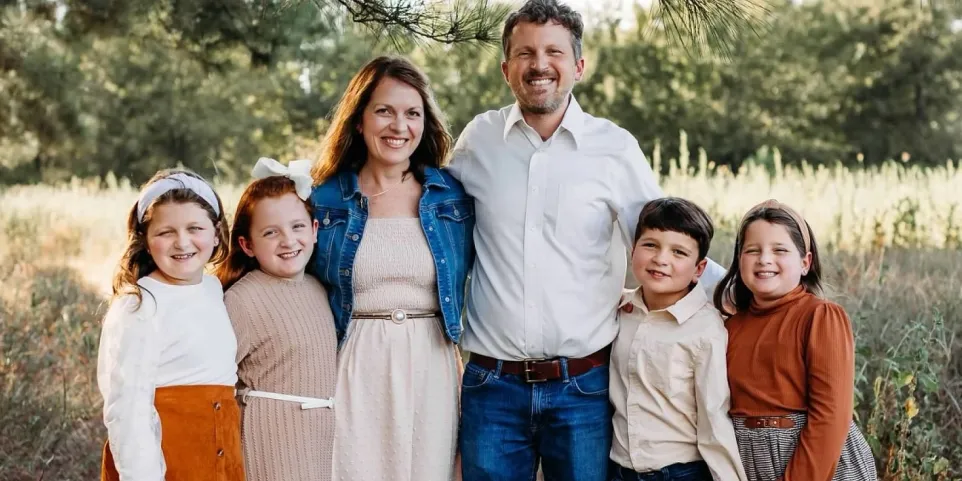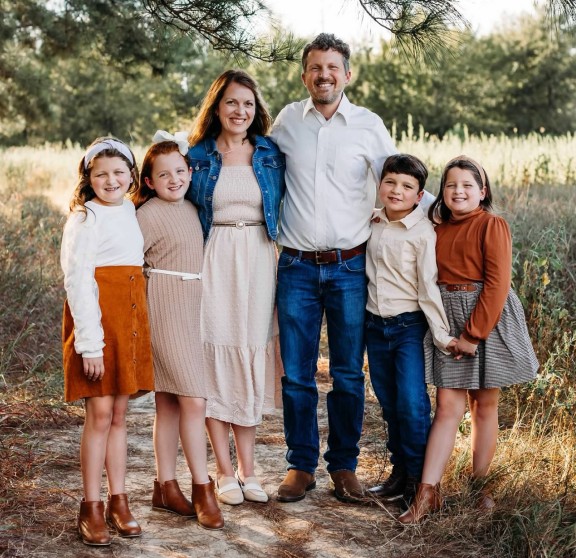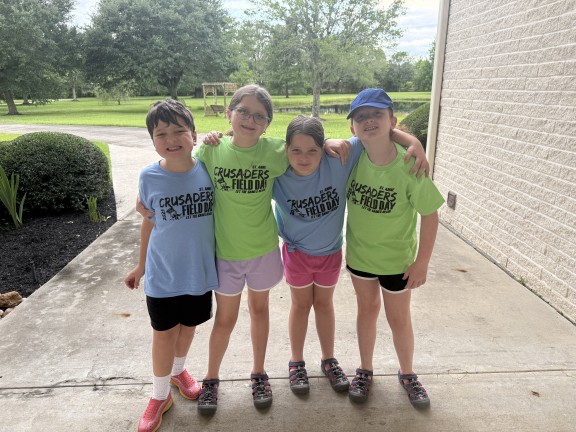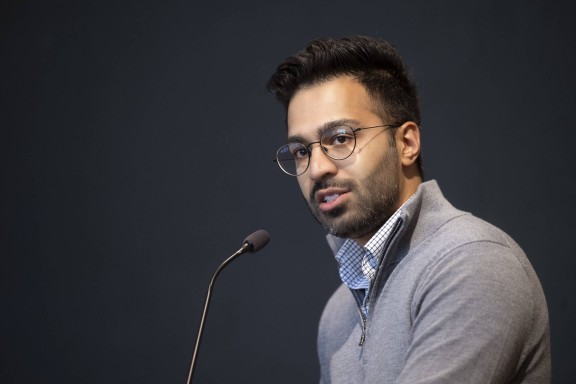Hope for the future: how one family is creating healthier outcomes for children with autism


When eight-year-old Owen wakes up in the morning, he runs through the house, shouting, “The sun is up! It’s time to get up!” His three sisters and his parents, Jennifer and Peter, open their eyes to his voice. Owen is their ray of sunshine.
“Owen has this positive energy,” says Peter. “There are just these silly things he does that light up the room.”
Growing up, Owen hit his milestones. He learned to crawl, walk, and run. He sang songs with his sisters and learned a special one for Mother’s Day, which he and his sisters sing to their mom every year.

Owen with his parents and three sisters, including his twin sister, Alice
But as Owen continued to grow, he took longer than expected to learn his words. He didn’t play with other kids. During his first week at a new pre-school, Owen wouldn’t hold a pencil.
At first, Owen’s pediatrician diagnosed him with autism and started him on behavioral therapy. But when Owen still couldn’t focus or complete tasks, struggled to talk, and stopped even singing the Mother’s Day song, Jennifer and Peter knew something more was going on.
A meeting of minds
Jennifer and Peter took Owen to Texas Children’s Hospital, where Dr. Sarah Risen, a pediatric neurologist, conducted genetic sequencing and discovered a mutation in Owen’s ITSN1 gene — essential for cell-to-cell communication in the brain. They switched to medications that might help target this mutation, but only partially.
Though ITSN1 has been linked to autism before, very little is known about the gene’s function in the body and how it causes disease, and no targeted treatment currently exists. Jennifer and Peter knew something had to change. They began reading any scientific papers they could find about the gene. They emailed researchers, hoping to find out more.
“As a parent, you try to project out into the future. What could happen in 5 years? Or 10 years? Are we missing something?” says Jennifer. “Right now, we try medications and it’s a shot in the dark. We don’t know how they’re impacting him.”
Then, earlier this year, they stumbled on a paper about ITSN1 published by one of Texas Children’s own scientists at the Duncan Neurological Research Institute (Duncan NRI) — Dr. Ryan Dhindsa. Dr. Dhindsa had discovered that ITSN1 causes an increased risk for Parkinson’s disease and was working to understand the underlying disease mechanism.
“ITSN1 is one of the first definitive examples where identical mutations in the same gene cause both autism spectrum disorders in children and Parkinson’s disease in adults, but we don’t yet know how,” says Dr. Dhindsa. “My ultimate goal is to transform ITSN1-related conditions from mysterious, untreatable disorders into well-understood conditions with effective interventions.”
“How lucky we are that we have someone who is this intelligent, ambitious, and passionate about the mutation that our son just happens to have. In the same city as us. It’s just serendipitous,” says Peter.

Owen with his sisters
Diving deeper
Jennifer and Peter began working with Dr. Dhindsa in his race to uncover new treatment strategies to help Owen — and all children like him.
They started a fundraiser and gave blood samples to Dr. Dhindsa. Dr. Dhindsa’s lab is transforming these samples into induced pluripotent stem cells (iPSCs), which they can then develop into brain organoids, or “mini brains in a dish.” With these tools, Dr. Dhindsa can investigate precisely how ITSN1 mutations disrupt neural development to cause autism and search for biological markers that may help predict which children are more likely to develop Parkinson’s later in life. He is also exploring whether existing drugs can target the ITSN1 pathway and reverse disease.
“Dr. Dhindsa is very smart, talented, personable, and very passionate about what he is doing. He really cares about the impact on people,” says Jennifer. “We were blown away by everything that he’s got going on in his brain in terms of ideas.”
“Meeting Owen’s family was truly inspirational. Both Jennifer and Peter have navigated quite the diagnostic journey for Owen, and now they have become invaluable research partners,” says Dr. Dhindsa. “Every day, they remind me of the real-world impact our work can have.”
By partnering with Jennifer, Peter, Owen, and their family, Dr. Dhindsa is combining a patient-centered approach with his expertise in large-scale data. New technology is enabling him to analyze genetic data from millions of people simultaneously, identifying disease associations that would have been statistically impossible to detect with smaller samples — work that led him to his ITSN1 discovery in the first place.
And now, with help from Jennifer and Peter, Dr. Dhindsa can dive deeper into the functional biology of his findings. He can, one day, take his discoveries from the bench back to the bedside in the form of personalized, targeted treatments.

Dr. Ryan Dhindsa speaking at a research symposium at the Duncan NRI
Hope for a healthier future
Since his initial discovery, Dr. Dhindsa has heard from a growing number of families worldwide who suffer from ITSN1 mutations, connecting Jennifer and Peter to a community of ITSN1 patients and opening research pathways that didn’t exist before.
“Owen’s generation could be the first to benefit from precision medicine approaches based on their specific genetic variants,” says Dr. Dhindsa. “A diagnosis that once offered only uncertainty can actually now be a roadmap for personalized care.”
After years of searching, Jennifer and Peter are starting to have answers — to have hope.
“We’ve known Owen’s had autism for 5 or 6 years. We’re hopeful now that that will not be his future,” says Jennifer. “This is the first time we’ve felt that maybe there is truly a cure for his disorder.”
To help advance Dr. Dhindsa’s ITSN1 research, make a gift to Jennifer and Peter’s community fundraiser here.
For more information about Dr. Dhindsa’s research on the ITSN1 gene, reach out to his laboratory at ryan.dhindsa@bcm.edu.
To support life-changing brain research at Texas Children’s Duncan Neurological Research Institute, make a gift here.